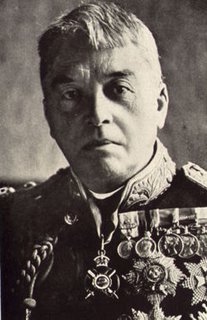A' Famosa.

This is coolbert:
Military planners, when formulating strategy, pay close attention to CHOKE POINTS. If on the offensive, you avoid them. If on the defensive, you utilize them to your advantage.
Choke point:
"In military strategy, a choke point is a geographical feature (such as a valley or defile) which forces an army [or navy] to go into a narrower formation (greatly decreasing combat power) in order to pass through it."
[on land, think of constricting terrain. Blood River, or Thermopylae. Bunching, constriction, no room to deploy!]
"In general, a chokepoint is any node in a network with a high centrality."
[this is a very military definition!!]
"The most important naval chokepoints were first identified by John Arbuthnot Fisher [Jackie Fisher] in his defense of continued British colonialism [Naval domination necessitated]."

These were:
* Hormuz Strait between Oman and Iran at the entrance to the Persian Gulf (Oman).
* Strait of Malacca between Malaysia and Indonesia (Singapore).
* Bab-el-Mandeb passage from the Arabian Sea to the Red Sea
* Panama Canal and the Panama Pipeline connecting the Pacific and Atlantic Oceans.
* Suez Canal and the Sumed Pipeline connecting the Red Sea and Mediterranean Sea (Egypt).
* The Turkish Straits/Bosporus linking the Black Sea (and oil coming from the Caspian Sea region) to the Mediterranean.
* The Strait of Gibraltar.
* Cape Horn (Falklands).
* The Cape of Good Hope (South Africa).
Over one hundred years later, since the time of Jackie Fisher, the role of maritime choke points has not diminished. In the age where oil and the transport of same by sea are so vital, oceanic chokepoints are crucial to the world economy and the stability and security of a variety of nations.
World Oil Transit Chokepoints.
[to include NOT only the transit of oil, but general commercial maritime traffic, liquid natural gas [LNG], etc.]
These include:
* Strait of Hormuz leading out of the Persian Gulf
* the Strait of Malacca linking the Indian Ocean (and oil coming from the Middle East) with the Pacific Ocean.
Other important maritime "chokepoints" include
* the Bab el-Mandab passage from the Arabian Sea to the Red Sea.
* the Panama Canal and the Panama Pipeline connecting the Pacific and Atlantic Oceans.
* the Suez Canal and the Sumed Pipeline connecting the Red Sea and Mediterranean Sea.
* the Turkish Straits/Bosporus.
Through the Strait of Malacca in particular, in those immense oil tankers, travels an abundance of oil bound for the Asian "Tigers". Those Asian nations [Japan, Korea, Taiwan, Singapore, and now CHINA!!] whose economies have come to dominate world commerce in many ways. Asia nations that are heavily dependent upon imported oil from the Middle East.
In this regard, the Strait of Malacca and the city by the same name is resuming an important role in world commerce that it originally had five hundred years ago. Commerce at the time in spices. Primarily pepper.
Malacca - - founded around the year 1400 by a refugee Sumatran Prince. A city that controlled to a large extent the spice trade between Asia and Europe. Spices greatly desired by Europeans and for which they [the Europeans] were totally dependent upon Arab and Venetian traders.
An unhealthy dependency that the Portuguese sought to remedy. By the conquest and colonization of Malacca. A conquest achieved in 1511 by a Portuguese army under the command of D'Albuquerque. Read of the battle for Malacca.
"the conquest of Malacca was absolutely necessary, since this alone would give them a complete monopoly of the pepper trade. As things were, Arab traders were able to take vast quantities of pepper and spices to Cairo, Alexandria and Venice, from Malacca via Bab-el-Mandeb, dodging the Portuguese Indian fleet on the way."
It sounds to me like the battle between the Portuguese and the Malay was a fair fight. Evenly matched combatants armed in a similar manner, neither having a decided edge over the other. Both sides had cannon, firearms, swords, spears, armor, etc. The Malay did employ poisoned darts and arrows. Shame on them!! This WAS not, however, a case where an imperial power rode roughshod over "inferiors".
The Malay did have WAR ELEPHANTS. Could this very well be the last recorded instance of war elephants being used in combat??!! The Portuguese, as were the soldiers of Alexander the Great and Eleazar the Hebrew before them, were not awed by the great animals and were able to combat them. Caused panic and chaos to the point where the elephants could not be controlled by their mahouts.
"In the band were twenty fighting elephants which now charged the Portuguese. Undismayed de Lima pierced the leading elephant in the eye with his spear and the maddened brute turned in the narrow road and fled, scattering the Malays, and infecting the other animals with its rage and terror."
[THE MADDENED BRUTE!!]
In the aftermath of the Portuguese conquest of Malacca, a large fort was built that allowed for domination of the Strait in absolute manner. NO ONE could pass without permission or paying a tax or giving up a portion of their cargo. This fort was called A' Famosa. Today, only the main gate of this bastion is left.
Malacca was a place worth fighting for. Besieged many times, primarily by the Dutch, European competitors of the Portuguese for the spice trade. A' Famosa later became a Dutch possession and then came under the control of the British.
[Malacca city is now spelled Melaka. The harbor silted up some time ago, the city itself not being vital to seaborne commerce as it was in 1511.]
The strategic choke point location DOES remain vital!!
coolbert.

0 Comments:
Post a Comment
Subscribe to Post Comments [Atom]
<< Home